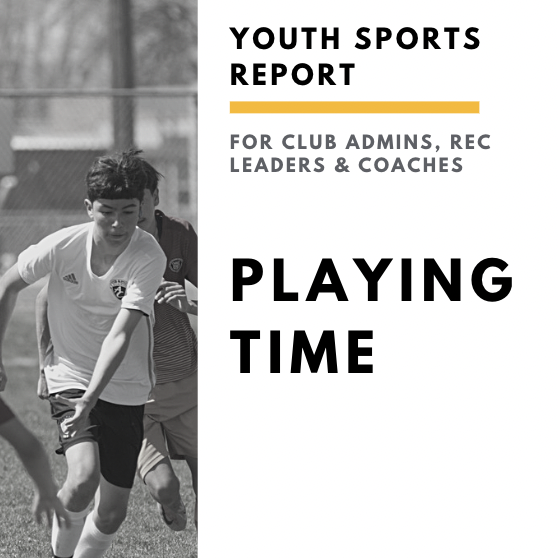Get our exclusive report. Download the iSport360 Club Switching Report Here – For Club Admins, Rec Leaders and Coaches.
Say No! Kids Doing Too Much
Are your kids eating dinner at 4 pm or 10 pm? Well, you are not alone. And as a coach, I have had it. Please step in and stop the madness. Are your kids doing too many sports?
If your player comes to you and want to do more than 2 sports, stop it. Just say no, it is for your players own benefit for the short term and long term. There are times when you have to make sacrifices but know your kid. If your kid wants to do 3 teams or more, that is just part of the tipping scale to too much!
From soccer and basketball to gymnastics and swimming, parents are often faced with a dizzying array of options when it comes to extracurricular activities for their children. While participation in sports undoubtedly offers a myriad of benefits, there’s a darker side to the culture of overscheduling that often goes unnoticed. Get our tips on how to fix the problem of kids doing too many sports.
1. Physical Exhaustion and Burnout
One of the most glaring downsides of overscheduling in sports is the toll it takes on a child’s physical well-being. With back-to-back practices, weekend tournaments, and travel commitments, young athletes are at risk of overexertion and burnout. Constantly pushing their bodies to the limit can lead to injuries, fatigue, and a loss of passion for the sport they once loved.
Tip: Don’t forget to do something fun after a game or tournament. Ice cream, anyone? 🙂
2. Mental Stress and Anxiety
In addition to physical exhaustion, overscheduling can also take a significant toll on a child’s mental health. The pressure to perform, meet expectations, and juggle multiple commitments can lead to heightened levels of stress and anxiety. From worrying about upcoming games to struggling to keep up with academic responsibilities, young athletes may find themselves overwhelmed by the demands placed upon them, risking their mental well-being in the process.
Tip: We don’t have to stress this enough, MAKE sure your athlete has downtime.
3. Sacrificed Social and Academic Opportunities
Participation in sports often requires a significant time commitment, leaving little room for other important aspects of a child’s life, such as academics and social activities. As a result, overscheduled athletes may find themselves sacrificing opportunities for academic enrichment, extracurricular involvement, and quality time with friends and family. This imbalance can hinder their overall development and limit their opportunities for growth and exploration beyond the realm of sports. That’s the impact of kids doing too many sports.
Tip: Make sure your athlete doesn’t skip something that is fun with friends. Your athlete will not get that time back.
4. Financial Strain on Families
The cost of participating in youth sports can add up quickly, especially for families with multiple children involved in multiple activities. From registration fees and equipment costs to travel expenses and tournament fees, the financial burden of overscheduling can place a significant strain on families’ budgets. For some, the cost may become prohibitive, limiting access to sports opportunities and exacerbating disparities in participation based on socioeconomic status.
Tip: Focus on recreation sports that are available. Use online resources to find at-home training. Get a friend to join too!
5. Diminished Long-Term Success
Contrary to popular belief, more is not always better when it comes to youth sports. You don’t want your kids doing too many sports, it negatively impacts them. While it may seem counterintuitive, overscheduling can actually hinder a child’s long-term success in their chosen sport. Burnout, injuries, and mental fatigue can derail their athletic aspirations, while a lack of time for rest and recovery can impede their physical development. By prioritizing quality over quantity and allowing for adequate time for rest and rejuvenation, young athletes are better positioned for sustained success in the long run.
Tip: Focus on the slow process, measure success by a season; and only measure if your athlete is improving.
Finding Balance and Prioritizing Well-Being
In a culture that often glorifies busyness and overachievement, it’s easy to fall into the trap of overscheduling in youth sports. However, it’s essential for parents, coaches, and athletes alike to recognize the hidden costs of this approach and prioritize the well-being of the child above all else. By fostering a balanced approach to sports participation, emphasizing rest and recovery, and encouraging open communication, we can create an environment where young athletes can thrive both on and off the field. After all, the ultimate goal of youth sports should be to nurture a lifelong love of physical activity, promote holistic development, and empower children to reach their full potential, both as athletes and as individuals.
iSport360 is the only app that does it all for youth sports. For more information on what we do, click here.
About the author:
Amy Masters is a sports mom, coach, and club administrator. She has been coaching youth sports for more than 10 years. She started Jr Lions Field Hockey, the youth recreation program for the Hunterdon County community growing it from 40 players in year 1 to 150 players by year 3. A few years later, she saw the love and competitiveness grow then started Omega Field Hockey Club serving NJ and PA players. Before coaching, she was a collegiate field hockey player for Lock Haven University. In her spare time (lol), she is head of marketing for iSport360 and the co-editor of the Youth Sports Survival Guide. The Youth Sports Survival Guide is the largest youth sports newsletter in the world.
Learn more or request a demo of our youth sports software that is helping teams improve communication, organization and player development.
May 9, 2024





